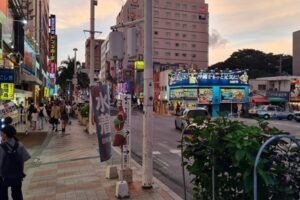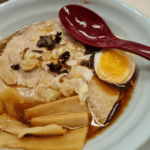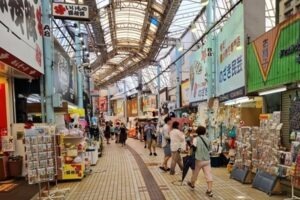Kokusai-Dori (International Street) is the central hub of activity in Naha, Okinawa’s capital city. The street is a popular tourist destination that offers a wide range of experiences, from shopping to dining to exploring local culture.
History and Name Origin

Kokusai-Dori’s name comes from the “Ernie Pyle International Theater,” which was constructed after World War II, highlighting its post-war development. The theater was named after the famous American war correspondent, Ernie Pyle, who was known for his reports during WWII. This theater was a symbol of recovery and international relations at the time, and over the years, Kokusai-Dori became a major artery in Naha.
Features of Kokusai-Dori
The street is vibrant, stretching about two kilometers and lined with businesses catering to tourists and locals alike. Some key points include:
Shopping: You’ll find a wide variety of stores, ranging from large department stores and souvenir shops to smaller boutiques. Traditional Okinawan crafts, clothing, and specialty items are widely available.

Dining: Restaurants serve local Okinawan dishes, such as goya champuru (bitter melon stir-fry) and Okinawa soba (a noodle dish unique to the region). Many dining spots offer live Okinawan folk music performances in the evening, allowing visitors to enjoy the local culture while dining.
Entertainment: Bars and cafes are scattered throughout the street, often staying open late, adding to the lively nighttime atmosphere.
Shopping Arcades: Heiwadori, Mutsumidori, and Ichiba Hondori

The arcades branching off from Kokusai-Dori are worth exploring for those wanting an even more intimate shopping experience. These covered arcades are home to smaller, more traditional shops, often family-run or operated by a single person. Here, you’ll find unique, handmade goods, ranging from crafts and trinkets to fresh local produce and food stalls. These arcades’ atmosphere is quieter and more authentic compared to the busier main street.
Kokusai-Dori is also a convenient starting point for exploring other parts of Naha, including historical and cultural sites like Tsuboya Pottery Street and the Tug of War Monument, both nearby.
Video:
Thanks for reading, Cheers
Gert

